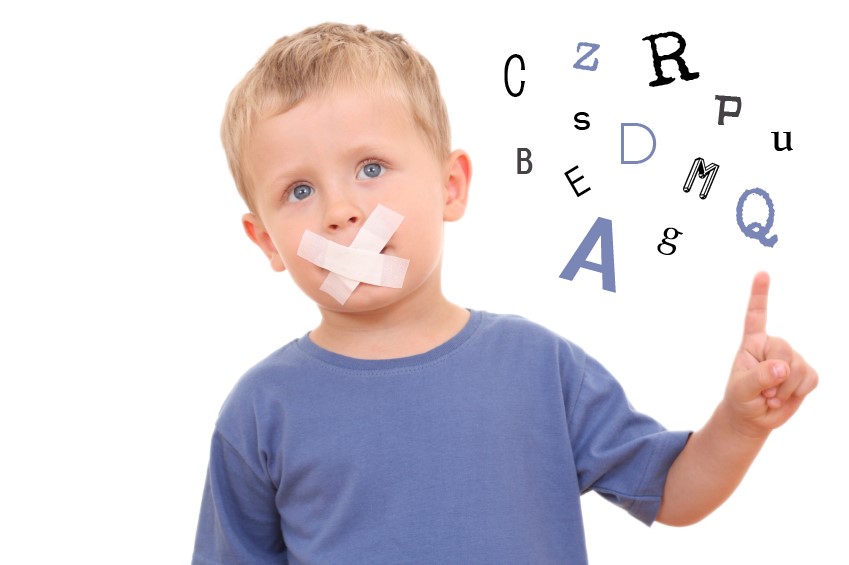
Stuttering or transient developmental dysfluency
The appearance of the first verbal dysfluencies at risk of becoming chronic (stuttering) is generally around three to six years of age, a period when the child makes a considerable effort to learn language
Stuttering and spontaneous regression
From the ‘nuclear domain’ of the word (stage of the word sentence. ‘bread’… instead of … ‘give me bread…’) around the age of three, the child faces the explosion of the sentence, and with compulsory schooling the expansion of vocabulary and syntax with the (scholastic) demand for an elaborate linguistic code as opposed to the personal restricted code.
According to the scholar L. Rustin in a 1992 study of a sample of 209 stuttering children, 95 per cent started before the age of 7, 27 per cent before the age of 3, and 5 per cent after the age of 7.
Consider how 40-70/80 % of boys who stutter regress naturally to normal fluency in adolescence, without any direct therapeutic intervention.
The relationship between this percentage and the possibility of the disorder becoming chronic, makes early intervention by a specialist and the prospect of in-depth preventive intervention professionally necessary against the common idea of a spontaneous regression, sometimes complicated by inappropriate interventions by the family and parental sphere emotionally involved with the subject.
CHILD HEALTH: LEARN MORE ABOUT MEDICHILD BY VISITING THE BOOTH AT EMERGENCY EXPO
Early intervention not only concerns the early diagnosis of the symptom (stuttering, dysfluencies) but must also concern itself with its development over time
The results of our research confirm (in line with scholars such as Starweather and Conture) the presence of certain characteristic elements in the language of a child at risk (Table A) of future chronification of dysfluency (secondary stuttering, evolutionarily stable over time):
Phonetic ELEMENTS characteristic of LANGUAGE AT RISK
Dysfluencies reach more than 3/4%.
When in a series of 100 words about 28/30% of prolongations are detected out of the total number of difluencies presented.
When frequent repetitions of phonemes and syllables of the first word of the sentence are present.
Repetition of phonemes or syllables account for more than 1% of verbal interruptions (out of a total of about 200 syllables with communicative value).
When the loss of eye contact exceeds about 50% of the verbal report time.
The scholar Edmund Yairi states, in confirmation of the transitory nature of the logopathic picture, that it is necessary to wait about 20 months from the onset of verbal symptomatology in order to make a serious assessment between a true stuttering (chronic and stabilised) and a temporary, apparent and transitory stuttering.
These criteria intended more for research than for the clinic must in any case orient the specialist’s treatment of the disorder beyond subjective and reductive considerations.
We share with the international research orientation the need to take charge of the family when the subject’s restlessness and parental concern become negative factors for verbal development.
Emotional reactions are confirmed as criteria of great importance in the prevention of stuttering
The picture presented is not exhaustive of all the signs/symptoms that may allow the early signs of a child stuttering to be identified, but they are in their generality the most common.
Read Also:
Emergency Live Even More…Live: Download The New Free App Of Your Newspaper For IOS And Android
Symptomatology Of Stuttering: External Symptoms And Internal-Personal Symptoms
Antipsychotic Drugs: An Overview, Indications For Use
What You Need To Know About Substance Use Disorder
Schizophrenia: Risks, Genetic Factors, Diagnosis And Treatment
Forms Of Stuttering: A Concise Classification
Obsessive-Compulsive Personality Disorder: Psychotherapy, Medication
Seasonal Depression Can Happen In Spring: Here’s Why And How To Cope
Metropolitan Police Launches A Video Campaign To Raise Awareness Of Domestic Abuse
Metropolitan Police Launches A Video Campaign To Raise Awareness Of Domestic Abuse
World Women’s Day Must Face Some Disturbing Reality. First Of All, Sexual Abuse In Pacific Regions
Child Abuse And Maltreatment: How To Diagnose, How To Intervene
Child Abuse: What It Is, How To Recognise It And How To Intervene. Overview Of Child Maltreatment
Does Your Child Suffer From Autism? The First Signs To Understand Him And How To Deal With Him
Emotional Abuse, Gaslighting: What It Is And How To Stop It


